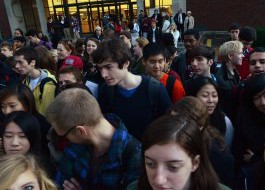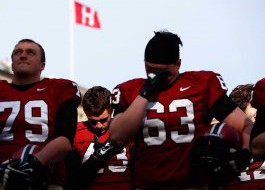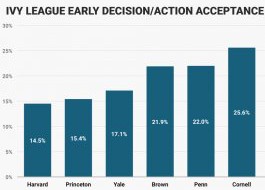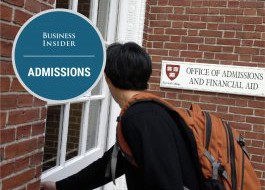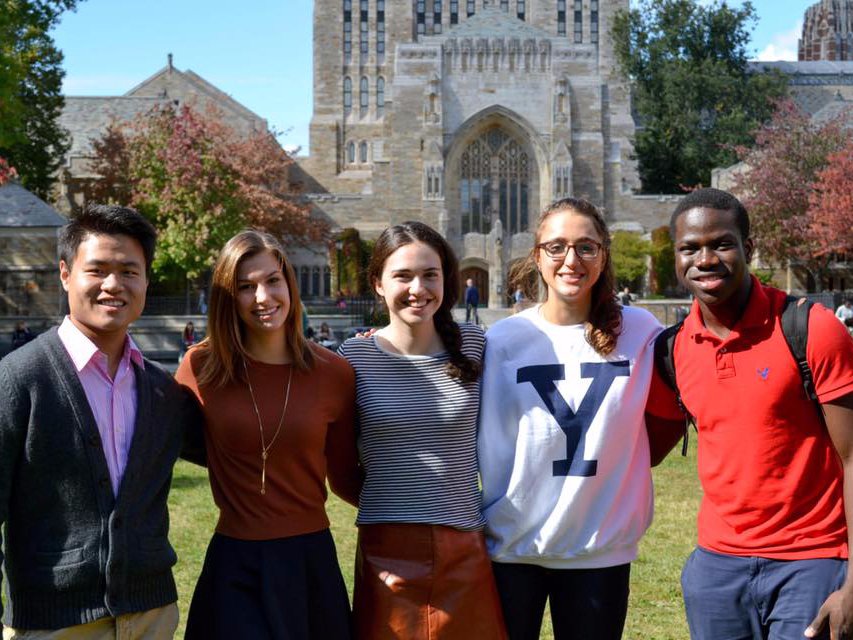
College admissions season is upon us, reinvigorating conversations about what it takes to get accepted into top schools around the nation. The impressive strength of the applicant pool has been apparent over the past few years.
Business Insider, for example, profiled impressive students for the class of 2020, some of whom gained acceptance to all eight Ivy League schools.
The New York Times, too, puts out an annual call for college-admissions essays to the newest class of applicants, and then prints the most poignant essays, displaying the wit an eloquence of the teenage applicants.
The strength of these credentials and impressive essays elicits the question of whether it's more difficult to get into elite schools today than ever before. Former Ivy League admissions directors have some potentially unsettling news for college applicants: yes, it is.
"Admissions have gotten more and more competitive in the past decade," Angela Dunnham, a college admissions counselor at InGenius Prep, told Business Insider via email. "In addition to the sheer number of applicants applying, the expectations for candidates have increased," Dunnham, a former assistant director of admissions at Dartmouth College, said.
The steady uptick of college applicants, especially at elite schools, is stark, driven in part by the emergence of Common App, which allows students to apply to many schools at once.
Take, for example, an article in the Harvard Crimson about the acceptance rate for the class of 2000. "The class was chosen among a pool of 18,190 applicants, making Harvard's admission rate a paltry 10.9 percent — the lowest in College history," The Crimson wrote.
Twenty years later, the authors of that story are likely to be aghast that the acceptance rate has spiraled ever lower. With more than double the applicants, about 95% of students who applied to Harvard were rejected.
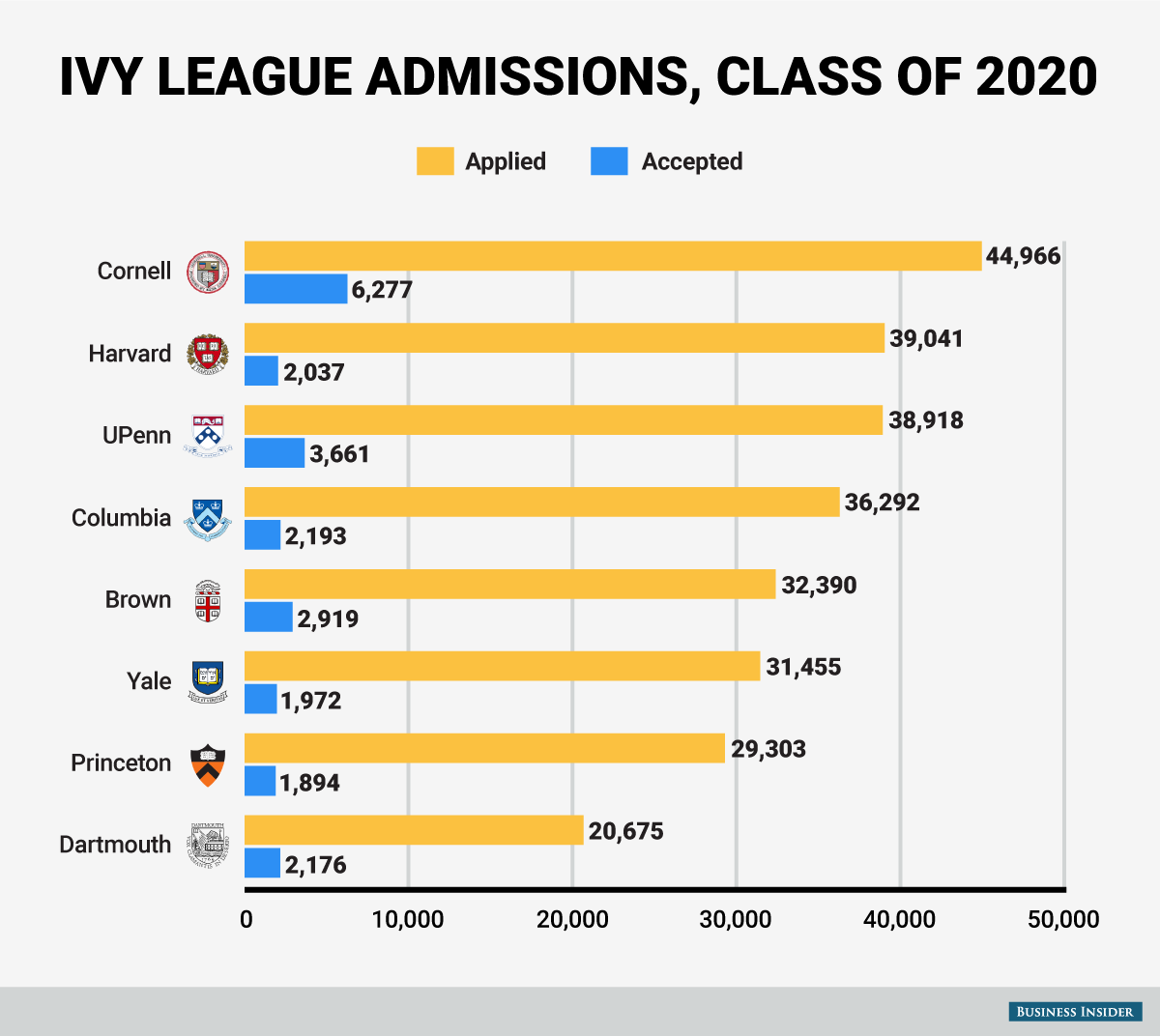 BI Graphics
BI Graphics
In addition to the sheer number of applicants which make thefield appear more competitive, the academic credentials ofstudents are also becoming more impressive, in part due to theincrease in international students who have begun to flood UScolleges and universities.
"I met a Korean freshman who scored a 2400/2400 on the SAT,after taking in once," Dunnham said. "She also was conductingimpressive research and loved debate."
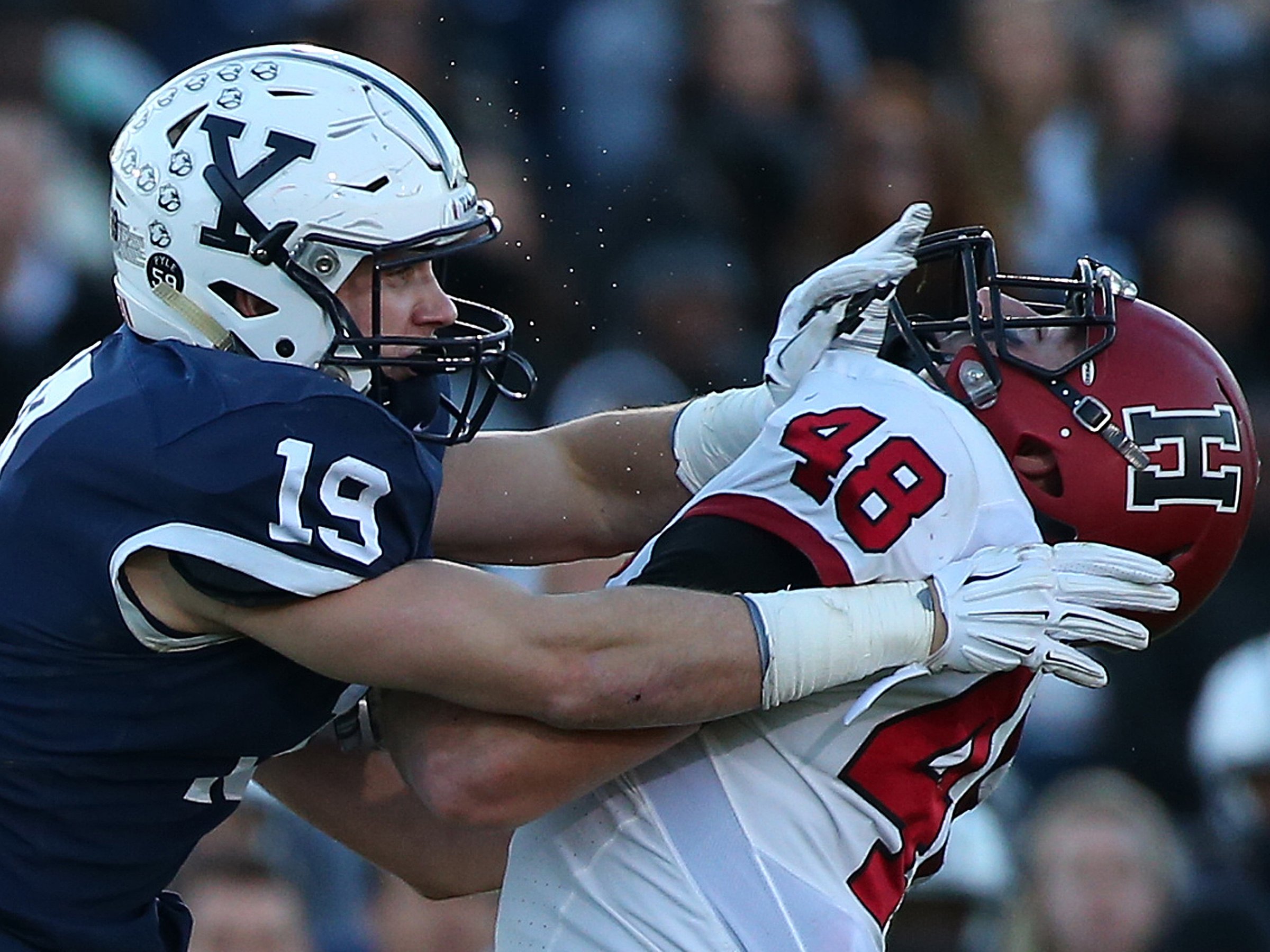 Elite colleges arebecoming even more competitive.Getty / Jim Rogash
Elite colleges arebecoming even more competitive.Getty / Jim Rogash
However, there may be reason to view this lowering acceptancerate with some skepticism, Cat McManus, a counselor InGenius Prep and a former a ssistant dean and regionaldirector at The University of Pennsylvania, told BusinessInsider via email.
Selective colleges may have ballparkfigures they hope to achieve (and not surpass) when itcomes to the percentage of an incoming class that can becomprised of international students, McManus explained. Theincrease in international applicants, therefore, while it maydrive down the overall acceptance rate, likely has less impacton US applicants than is sometimes believed.
"The rise in the number of international applicants to the mostselective institutions in the US has inflated the number ofoverall applicants, as well as, in some cases, the GPA andtesting profiles, which makes schools appear more selectivefrom a purely statistical standpoint," McManus, who was also anadmissions officer at Princeton, said.
And while in many cases it looks like GPA and standardized testscore averages are increasing, some of this should beattributed to the test prep era, which is ubiquitous in thecollege admissions process.
"Whether applicants are actually 'stronger' is tough to say,"McManus said. "There is also a lot of essay 'help' that goeson, both domestically and internationally."
Still, while the increase in students utilizing test prep toboost scores doesn't necessarily mean these applicants areinherently stronger students than they were a decade ago, itdoes mean that average test scores are inching up, potentiallyharming students who don't have the means to pay for extrahelp.

